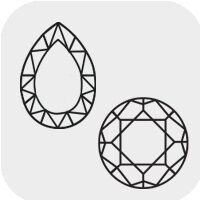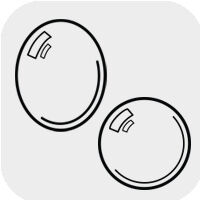Citrine Meaning and Properties
Citrine History
Its name is derived from the Latin word citrina because of its pale yellow citrus color (due to its iron content). From the earliest of times, citrine was called the "sun stone" and the gemstone was thought capable of holding sunlight and useful in the protection from snakebites. Its color was associated with gold and it became known as the merchant's stone. It was thought to improve communication and to attract wealth. To the Romans, it was the stone of Mercury, the messenger god, and it was used for carving intaglios.

Bask in the glow of November's birthstone--citrine! Learn more about the history of the "merchant's stone", its proposed metaphysical benefits and its part in mildly controversial marketing tactics.
Citrine Metaphysical Properties
Citrine is the November birthstone and for the zodiac sign of Scorpio (Oct. 23 - Nov. 21). Citrine has been referred to as the "success stone," "merchant's stone" or "money stone." Because of its yellow color, citrine is thought of as a joyous stone with sunshiny energy to brighten up the lives of those who work with it and wear it.
The color of the solar plexus chakra is yellow, so citrine is associated with this chakra. It is thought to have a positive influence that can relieve backache and combat depression, negative energy and problems with the liver, spleen, digestive system and the bladder.
Citrine Geological Properties
Citrine is a macrocrystalline form of quartz, as are amethyst, aventurine and rose quartz. It is a mineral based on silicon dioxide.
Gem-quality transparent specimens of citrine with good color are very rare. The best examples come from Brazil, Madagascar and the former USSR. The stone is also found in Colorado, Spain, France and Scotland.
Natural citrine is rare. Most citrine on the market is heat-treated amethyst or smoky quartz. Brazilian amethyst turns yellow at 878° while smoky quartz changes color at a lower temperature (572 degrees to 752 degrees). These heat-treated stones have a slightly reddish tint.
Due to its color, citrine is sometimes confused with yellow topaz, yellow beryl and yellow tourmaline. Like other members of the quartz family, citrine crystal veins typically form from molten magma or from a mineral solution in the rock deposited through precipitation. Deposits of natural-colored citrine have been mined in Brazil, the leading producer, as well as the United States, Madagascar, Argentina, Myanmar (Burma), Namibia, Russia, Scotland and Spain.
|
|
|
|
|
|
|
|
|
|
| |
|
|
|
|
|
|
Proper Care of Citrine
Citrine can be safely cleaned with warm, soapy water. It is generally safe to use ultrasonic cleaners except when the stone is dyed or treated by fracture filling. Steam cleaning is not recommended, as citrine should not be subjected to heat.
Abrupt temperature changes can cause citrine to fracture. Avoid prolonged exposure of citrine to intense light, which can cause color fading. Citrine can also be damaged by hydrofluoric acid, ammonium fluoride and alkaline solutions.
To learn more about citrine and other gemstones, order your copy of Walter Schumann's revised and expanded edition of Gemstones of the World.
Designing with Citrine
The warm yellow of citrine is perfectly complemented by gold. A beautiful, low-key design is achieved by combining it with other yellow-to-green stones like yellow fluorite, peridot and moss or green agate. For a regal, high- contrast look, mix it with the rich red of garnet. An elegant pastel combination is citrine with its split-complements of blue and violet--using aquamarine and light amethyst.
View more resources featuring citrine, including Design Ideas, Videos, Tutorials and more!
Shop for Citrine
**Please note that all metaphysical or healing properties listed are collected from various sources. This information is offered as a service and not meant to treat medical conditions. Fire Mountain Gems and Beads® does not guarantee the validity of any of these statements.
How did you like this resource? Your feedback helps us provide resources that matter to you most.
Copyright Permissions
All works of authorship (articles, videos, tutorials and other creative works) are from the Fire Mountain Gems and Beads® Collection, and permission to copy is granted for non-commercial educational purposes only. All other reproduction requires written permission. For more information, please email copyrightpermission@firemtn.com.




